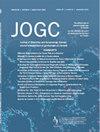Ehawawisit: Sociodemographic and Clinical Characteristics and Perinatal Outcomes of Métis Pregnancies in Alberta, Canada
IF 2.2
Q2 OBSTETRICS & GYNECOLOGY
引用次数: 0
Abstract
Objectives
This study aimed to evaluate sociodemographic and clinical characteristics and perinatal outcomes of Métis pregnancies in Alberta, Canada.
Methods
This was a retrospective population-based cohort study of all singleton pregnancies resulting in live births (≥220 weeks gestation) in Alberta (2006–2016). Métis births were identified through linkage of the Otipemisiwak Métis Government of the Métis Nation within Alberta Identification Registry with Alberta’s population and perinatal registries, and compared with non-Métis pregnancies. Age-standardized prevalence and adjusted odds ratios (aOR) with 95% CIs were calculated.
Results
The study included 7910 Métis and 471 522 non-Métis pregnancies. Métis pregnancies had higher rates of self-reported smoking (aOR 5.83; 95% CI 4.99–6.80), substance use during pregnancy (aOR 1.92; 95% CI 1.65–2.23), and pre-existing chronic hypertension (aOR 1.57; 95% CI 1.11–2.25). Métis deliveries had more obstetric hemorrhage complications (aOR 1.11; 95% CI 1.01–1.23), higher odds of spontaneous vaginal delivery (aOR 1.25; 95% CI 1.11–1.40), and lower odds of vacuum- or forceps-assisted delivery (aOR 0.69; 95% CI 0.63–0.75). Métis newborns had higher birth weights (3.42 kg vs. 3.35 kg), were more often large for gestational age (aOR 1.50; 95% CI 1.35–1.66), and less often small for gestational age (aOR 0.70; 95% CI 0.62–0.79). Rates of preterm births, neonatal intensive care unit admissions, and neonatal deaths were similar to those of non-Métis newborns.
Conclusions
Métis pregnancies had low overall perinatal complication rates but distinct differences in maternal and perinatal outcomes relative to non-Métis pregnancies. Métis-specific, culturally sensitive care may support improved perinatal outcomes for Métis families.
加拿大艾伯塔省孕妇的社会人口学、临床特征和围产期结局。
目的:评价加拿大艾伯塔省孕妇的社会人口学、临床特征和围产期结局。方法:对艾伯塔省(2006-2016年)所有活产(妊娠≥22周)的单胎妊娠进行回顾性人群队列研究。通过在艾伯塔省身份登记中心、艾伯塔省人口和围产期登记中心内的msamims族政府、Otipemisiwak msamims族政府的联系,确定了msamims族出生,并将其与非msamims族怀孕进行了比较。计算年龄标准化患病率和校正优势比(aOR), 95%置信区间(CI)。结果:本研究包括7910例mims和471 522例非mims妊娠。孕妇自我报告的吸烟率较高(比值比5.83;95% CI 4.99-6.80),妊娠期间药物使用(aOR 1.92;95% CI 1.65, 2.23)和既往存在的慢性高血压(aOR 1.57;95% ci 1.11-2.25。孕妇分娩时产科出血并发症较多(aOR 1.11;95% CI 1.01-1.23),更有可能是阴道自发(aOR 1.25;95% CI 1.11-1.40),使用较少的真空或钳辅助方法(aOR 0.69;95% ci 0.63-0.75)。m录影带携带者的新生儿出生体重较高(3.42g vs. 3.35g),胎龄较大(aOR 1.50;95% CI 1.35-1.66),胎龄较小(aOR 0.70;95% ci 0.62-0.79)。早产率、新生儿重症监护病房入院率和新生儿死亡率与未患msamims的新生儿相似。结论:与非mims妊娠相比,mims妊娠总体围产儿并发症发生率较低,但孕产妇和围产儿结局有明显差异。针对msamims的文化敏感护理可能有助于改善msamims家庭的围产期结局。
本文章由计算机程序翻译,如有差异,请以英文原文为准。
求助全文
约1分钟内获得全文
求助全文
来源期刊

Journal of obstetrics and gynaecology Canada
OBSTETRICS & GYNECOLOGY-
CiteScore
3.30
自引率
5.60%
发文量
302
审稿时长
32 days
期刊介绍:
Journal of Obstetrics and Gynaecology Canada (JOGC) is Canada"s peer-reviewed journal of obstetrics, gynaecology, and women"s health. Each monthly issue contains original research articles, reviews, case reports, commentaries, and editorials on all aspects of reproductive health. JOGC is the original publication source of evidence-based clinical guidelines, committee opinions, and policy statements that derive from standing or ad hoc committees of the Society of Obstetricians and Gynaecologists of Canada. JOGC is included in the National Library of Medicine"s MEDLINE database, and abstracts from JOGC are accessible on PubMed.
 求助内容:
求助内容: 应助结果提醒方式:
应助结果提醒方式:


